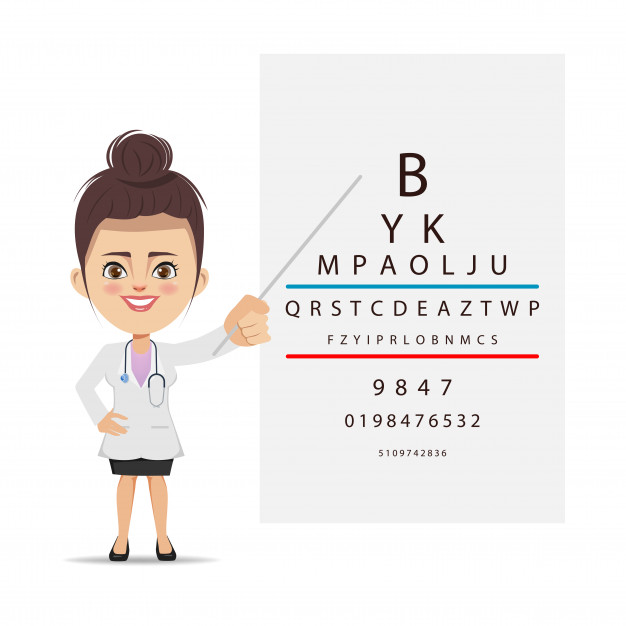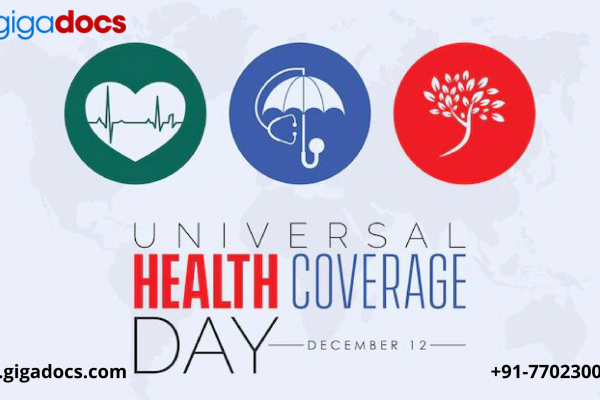We all would have faced some health condition, haven’t we? While some of these may not lead to extreme illness, lack of proper treatment or ignoring symptoms could lead to major complications. On a macro level, many health issues affect people worldwide; on micro terms, the top health issues can vary depending on demographic factors like location, age, and socioeconomic status. April 7th marks World Health Day, a global awareness day that focuses on our health and well-being.
We all have faced the atrocities of Covid, and taking care of one’s health has never been as crucial as today. Thus, to stay committed to our health, let’s learn more about World Health Day, the world’s top health concerns, how teleconsultation can help in diagnosis, and how you can book a specialized doctor through your phone with the help of the Gigadocs app. Let’s understand World Health Day through this blog, beginning with the observance of World Health Day.
World Health Day
World Health Day is celebrated every year on April 7th, it is a global health awareness day observed under the sponsorship of the World Health Organization (WHO). This day aims to raise awareness and understanding about health issues that affect us all.
Considering the COVID-19 pandemic, with new cases surging, the WHO has emphasized the importance of strengthening health systems and investing in public health infrastructure to prevent and respond to future health emergencies. World Health Day 2022 was dedicated to building a fairer, healthier world, addressing health inequities, and ensuring access to health care for all.
What are the most common health concerns around the World?
We all live in an increasingly interconnected world; our health problems are common through demographics. Let’s read more about some of the most common and pressing health issues that impact global populations:
- Cardiovascular disease: cardiovascular disease (CVD) is the leading cause of death worldwide, accounting for around 17.9 million deaths annually. CVD includes conditions like heart disease and stroke, which are often linked to lifestyle factors such as smoking, poor diet, and lack of exercise.
- Cancer: Cancer is the second leading cause of death globally, responsible for around 9.6 million yearly deaths. There are many types of cancer, and risk factors include genetics, lifestyle, and demographic factors.
- Respiratory diseases: respiratory diseases like chronic obstructive pulmonary disease (COPD) and asthma are major health concerns, particularly in developing countries. Risk factors include smoking, air pollution, and occupational exposures.
- Malnutrition: Malnutrition, including undernutrition and overnutrition, continues to be a significant global health concern, particularly among children under five and in low-income countries.
- Antimicrobial resistance: Antimicrobial resistance (AMR) is common in India, particularly as bacteria become antibiotic-resistant. This can increase morbidity and mortality, particularly among vulnerable populations.
- Non-communicable diseases: non-communicable diseases (NCDs) such as heart disease, stroke, cancer, and diabetes are rising globally. These diseases are often linked to lifestyle factors such as poor diet, lack of physical activity, and smoking.
- Mental health: Mental health issues which include depression, anxiety, and substance abuse, are becoming increasingly prevalent and can have a significant impact on quality of life and overall health. Stigma and lack of access to mental health services are significant barriers to treatment.
- Infectious diseases: Infectious diseases like Covid, HIV/AIDS, tuberculosis, malaria, and hepatitis are major health issues that impact global populations. With the ongoing risk of Covid 19 reaching new peaks in India, let’s mask up and take necessary precautions.
- Maternal and child health: Maternal and child health issues such as maternal mortality, infant mortality, and malnutrition continue to affect populations across India.
- Environmental health: Climate change, pollution, and environmental degradation have a significant impact on human health, contributing to respiratory problems, cardiovascular disease, and other health issues.
- Access to healthcare: Access to healthcare is a significant issue, particularly in low-income countries where many people lack access to basic healthcare services.
- Aging population: As populations around the world age, the prevalence of age-related health issues such as dementia, osteoporosis, and cardiovascular disease is increasing, especially in countries like Japan.
- Diabetes: Diabetes is a chronic condition that affects millions of people worldwide. Risk factors include obesity, poor diet, and lack of physical activity.
- Digestive diseases: Digestive diseases such as liver disease and gastrointestinal cancers are significant health concerns, particularly in low- and middle-income countries with limited access to healthcare.
- Kidney disease: kidney disease is a growing concern, particularly as the global population ages. Risk factors include diabetes, high blood pressure, and obesity.
- Musculoskeletal disorders: Musculoskeletal disorders like arthritis and back pain are common health issues, particularly as people age. These conditions can have a significant impact on mobility and quality of life.
- Substance abuse: Substance abuse, including alcohol and drug addiction, is a significant health issue that can lead to various physical and mental health problems.
- Tuberculosis: Tuberculosis (TB) is again a respiratory infection affecting people worldwide, particularly in developing countries like India. Access to healthcare, vaccination programs, and other preventative measures can help reduce TB’s spread.
- Liver disease: Liver disease is a significant health concern, particularly in low- and middle-income countries where viral hepatitis is common.
- Skin diseases: Skin diseases such as eczema, psoriasis, and skin cancer are common and can significantly impact the quality of life. Risk factors include genetics, sun exposure, and lifestyle factors like smoking.
- Genetic disorders: Genetic disorders like cystic fibrosis, sickle cell anemia, and Huntington’s disease are caused by abnormalities in an individual’s DNA. These disorders can significantly impact the quality of life and may require constant medical care.
- Autoimmune diseases: Autoimmune diseases that include rheumatoid arthritis, lupus, and multiple sclerosis occur when the body’s immune system attacks its tissues. These diseases can cause significant pain and disability.
- Allergies: Allergies occur when the body’s immune system overreacts to a substance like pollen, food, or medication. Allergies can cause a range of symptoms, from mild to life-threatening; the autumn and spring season in India are the most common to have allergy symptoms.
- Tuberculosis: Tuberculosis (TB) is a significant health concern, particularly in developing countries. Access to healthcare, vaccination programs, and other preventative measures can help reduce TB’s spread.
- Malaria: Malaria is a life-threatening disease caused by parasites transmitted to people through the bites of infected mosquitoes.
How can Teleconsultation help you manage your Health?
Teleconsultation, or digital healthcare, provides remote healthcare services, including consultations, diagnosis, and treatment. The question coming to your mind will be how can teleconsultation help you manage your health? Here is the answer- teleconsultation can help with healthcare in several ways:
- Holistic Access: Teleconsultation can help to increase access to healthcare services for people who live in remote areas, have limited mobility, or have difficulty accessing healthcare facilities. With teleconsultation, patients can receive healthcare services from the comfort of their homes or workplaces, reducing the need for travel and saving time and money.
- Enhanced Patient Satisfaction: Teleconsultation can improve patient satisfaction by providing a more convenient and personalized healthcare experience. Patients can receive care in a familiar environment and communicate with their healthcare provider more efficiently.
- Better Health Outcomes: Teleconsultation can help to improve health outcomes by enabling early diagnosis and treatment of illnesses. By providing more timely and convenient access to healthcare services, teleconsultation can help prevent disease progression.
- Cost Savings: Teleconsultation can help to reduce healthcare costs by reducing the need for travel and in-person consultations. It can also help reduce healthcare costs by enabling early diagnosis and treatment, leading to better outcomes and reduced healthcare expenses over time.
Gigadocs offers medical teleconsultation to improve healthcare accessibility by increasing access, efficiency, patient satisfaction, health outcomes, and healthcare costs. With the increasing use of technology in healthcare, teleconsultation is becoming an increasingly important part of healthcare services. Download the Gigadocs app to let us help you with any of your healthcare queries:
- IOS App – apple.co/2W2iG4V
- Android App – bit.ly/33AQoRC
To know more e-mail, at info@gigadocs.com




